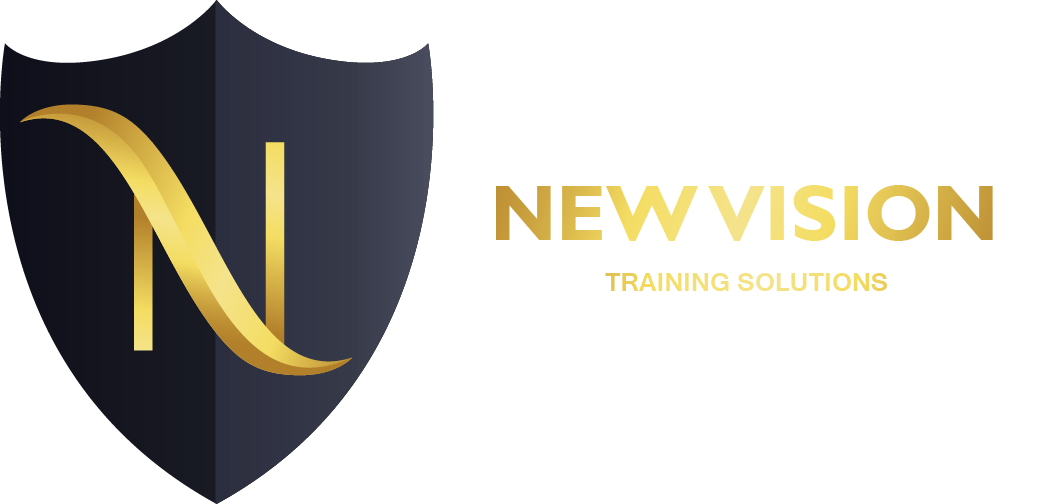70-347 Enabling Office 365 Services

About this course
This is a 5-day instructor-led training (ILT) course that targets the needs of IT professionals who take part in evaluating, planning, deploying, and operating Office 365 services, including its identities, dependencies, requirements, and supporting technologies. This course focuses on skills required to set up an Office 365 tenant, including federation with existing user identities, and skills required to sustain an Office 365 tenant and its users.Audience profile
This course will provide experienced IT professionals with the training that they need to plan, configure, and manage an Office 365 environment. Students who attend this course are expected to have a fairly broad understanding of several on-premises technologies such as Domain Name System (DNS) and AD DS, and a general understanding of Exchange Server, Microsoft Lync Server or Skype for Business Server, and Microsoft SharePoint Server.
This course also is intended as preparation material for IT professionals who are looking to take the exams 70-346: Managing Office 365 Identities and Requirements and 70-347: Enabling Office 365 Services to obtain the MCSA: Office 365 certification.
Course Outline
Module 1: Planning and provisioning Office 365This module reviews the features of Office 365 and identifies recent improvements to the service. Additionally it describes how to configure an Office 365 tenant and plan for a pilot deployment.Lessons
- Overview of Office 365
- Provisioning an Office 365 tenant
- Planning a pilot deployment
Lab : Provisioning Office 365
- Configuring an Office 365 tenant
- Configuring a custom domain
- Exploring the Office 365 administrator interfaces
After completing this module, students will be able to:
- Describe Office 365.
- Provision an Office 365 tenant.
- Plan a pilot deployment.
Module 2: Managing Office 365 users and groupsThis module describes how to manage Office 365 users, groups, and licenses, and configure administrative access by using the Office 365 console and the Windows PowerShell command-line interface.Lessons
- Managing user accounts and licenses
- Managing passwords and authentication
- Managing security groups in Office 365
- Managing Office 365 users and groups with Windows PowerShell
- Configuring administrative access
Lab : Managing Office 365 users and passwords
- Managing Office 365 users and licenses by using the Office 365 admin center
- Managing Office 365 password policies
Lab : Managing Office 365 groups and administration
- Managing Office 365 groups
- Managing Office 365 users and groups by using Windows PowerShell
- Configuring delegated administrators
After completing this module, students will be able to:
- Manage user accounts and licenses.
- Manage passwords and authentication.
- Manage security groups in Office 365.
- Manage Office 365 users and groups with Windows PowerShell.
- Configure administrative access.
Module 3: Configuring client connectivity to Microsoft Office 365This module describes the different types of client software that you can use to connect to Office 365, and the infrastructure requirements that the clients need to meet to connect to Office 365. In addition, this module teaches you how to configure different types of Office 365 clients.Lessons
- Planning for Office 365 clients
- Planning connectivity for Office 365 clients
- Configuring connectivity for Office 365 clients
Lab : Configuring client connectivity to Office 365
- Configuring DNS records for Office 365 clients
- Running the Office 365 connectivity analyzer tools
- Connecting Office 2016 clients
After completing this module, students will be able to:
- Plan for Office 365 clients.
- Plan connectivity for Office 365 clients.
- Configure connectivity for Office 365 clients.
Module 4: Planning and configuring directory synchronizationThis module describes how to plan and configure directory synchronization between Azure AD and on-premises AD DS.Lessons
- Planning and preparing for directory synchronization
- Implementing directory synchronization by using Azure AD Connect
- Managing Office 365 identities with directory synchronization
Lab : Configuring directory synchronization
- Preparing for directory synchronization
- Configuring directory synchronization
- Managing Active Directory users and groups
After completing this module, students will be able to:
- Plan and prepare for directory synchronization.
- Implement directory synchronization by using Microsoft Azure Active Directory Connect (Azure AD Connect).
- Manage Microsoft Office 365 identities with directory synchronization.
Module 5: Planning and deploying Office 365 ProPlusThis module covers the planning process, how to make Microsoft Office 365 ProPlus directly available to end users, and how to deploy it as a managed package. Finally, this module covers how to set up Office telemetry so that administrators can keep track of how users are interacting with Microsoft Office.Lessons
- Overview of Office 365 ProPlus
- Planning and managing user-driven Office 365 ProPlus deployments
- Planning and managing centralized deployments of Office 365 ProPlus
- Office telemetry and reporting
Lab : Managing Office 365 ProPlus installations
- Preparing an Office 365 ProPlus managed installation
- Managing user-driven Office 365 ProPlus installations
- Managing Centralized Office 365 ProPlus installations
After completing this module, students will be able to:
- Describe Office 365 ProPlus.
- Plan and manage user-driven Office 365 ProPlus deployments.
- Plan and manage centralized deployments for Office 365 ProPlus.
- Describe Office telemetry and reporting.
Module 6: Planning and managing Exchange Online recipients and permissionsThis module describes Exchange Online and explains how to create and manage recipient objects and how to manage and delegate Exchange security.Lessons
- Overview of Exchange Online
- Managing Exchange Online recipients
- Planning and configuring Exchange Online permissions
Lab : Managing Exchange Online recipients and permissions
- Configuring Exchange Online recipients
- Configuring role-based access control
After completing this module, students will be able to:
- Plan and prepare for directory synchronization.
- Implement directory synchronization by using Microsoft Azure Active Directory Connect (Azure AD Connect).
- Manage Microsoft Office 365 identities with directory synchronization.
Module 7: Planning and configuring Exchange Online servicesThis module describes how to plan and configure Exchange Online services. It also explains how to plan and configure anti-malware and anti-spam settings in Office 365.Lessons
- Planning and configuring email flow in Office 365
- Planning and configuring email protection in Office 365
- Planning and configuring client access policies
- Migrating to Exchange Online
Lab : Configuring message transport in Exchange Online
- Configuring message transport settings
Lab : Configuring email protection and client policies
- Configuring email protection
- Configuring client access policies
After completing this module, students will be able to:
- Plan and configure email flow in Office 365.
- Plan and configure email protection in Office 365.
- Plan and configure client access policies.
- Migrate to Exchange Online.
Module 8: Planning and deploying Skype for Business OnlineThis module describes how to plan and implement the Skype for Business Online deployment. This module also describes how to plan voice integration with Skype for Business Online.Lessons
- Planning and configuring Skype for Business Online service settings
- Configuring Skype for Business Online users and client connectivity
- Planning voice integration with Skype for Business Online
Lab : Configuring Skype for Business Online
- Configuring Skype for Business Online organization settings
- Configuring Skype for Business Online user settings
- Configuring a Skype Meeting Broadcast
After completing this module, students will be able to:
- Plan and configure Skype for Business Online service settings.
- Configure Skype for Business Online user and client connectivity.
- Plan voice integration with Skype for Business Online.
Module 9: Planning and configuring SharePoint OnlineThis module describes the administrative features available within SharePoint Online and the most common configuration tasks for any administrator who starts using SharePoint Online. This module also describes the concept of site collections and the different sharing options within SharePoint Online. A brief overview of additional portals, such as the video portal, are also provided.Lessons
- Configuring SharePoint Online services
- Planning and configuring SharePoint site collections
- Planning and configuring external user sharing
Lab : Configuring SharePoint Online
- Configuring SharePoint Online settings
- Creating and configuring a SharePoint Online site collections
- Configuring and verifying external user sharing Configure
After completing this module, students will be able to:
- Configure SharePoint Online services.
- Plan and configure SharePoint Online site collections
- Plan and configure external user sharing.
Module 10: Planning and configuring a Office 365 collaboration solutionThis module describes how to plan and implement a SharePoint collaboration solution, and how to enable Yammer Enterprise services within Office 365 and OneDrive for Business, and Office 365 groups.Lessons
- Planning and managing Yammer Enterprise
- Planning and configuring OneDrive for Business
- Configuring Office 365 groups and Microsoft Teams
Lab : Planning and configuring an Office 365 collaboration solution
- Configuring a Yammer Enterprise
- Configuring OneDrive for Business
- Configuring Office 365 groups
After completing this module, students will be able to:
- Plan and manage Yammer Enterprise.
- Plan and configure OneDrive for Business.
- Configure Office 365 groups.
Module 11: Planning and configuring rights management and complianceThis module describes the compliance features in Office 365 and explains how to manage them. In addition, it describes how to plan and configure Microsoft Azure Rights Management (Azure RMS). Additionally, it discusses the security features in Office 365..Lessons
- Overview of the compliance features in Office 365
- Planning and configuring Azure Rights Mmanagement in Office 365
- Managing the compliance features in Office 365
Lab : Configuring Rrights Mmanagement and compliance
- Configuring rights management in Office 365
- Configuring compliance features
After completing this module, students will be able to:
- Describe the compliance features in Office 365.
- Plan and configure Azure RMS in Office 365.
- Manage the compliance features in Office 365.
Module 12: Monitoring and troubleshooting Microsoft Office 365This module describes how to monitor and review Office 365 services, and troubleshoot Office 365 issues.Lessons
- Troubleshooting Office 365
- Monitoring Office 365 service health
Lab : Monitoring and troubleshooting Office 365
- Monitoring Office 365
- Monitoring service health and analyzing reports
After completing this module, students will be able to:
-
- Troubleshoot Microsoft Office 365.
- Monitor Office 365 service health.
Module 13: Planning and configuring identity federationThis module describes how to plan and implement identity federation between on-premises AD DS and Azure AD.Lessons
- Understanding identity federation
- Planning an AD FS deployment
- Deploy AD FS for identity federation with Office 365
- Planning and implementing hybrid solutions (Optional)
Lab : Planning and configuring identity federation
- Deploying Active Directory Federation Services (AD FS) and Web Application
- Configuring federation with Microsoft Office 365
- Verifying single sign-on (SSO)
After completing this module, students will be able to:
- Describe identity federation.
- Plan an AD FS deployment.
- Deploy AD FS for identity federation with Office 365.
- Plan and implement hybrid solutions.
Course Features
- Lectures 0
- Quizzes 0
- Duration 40 hours
- Skill level All levels
- Language English
- Students 0
- Assessments Yes





